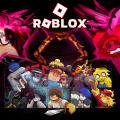LEGO Fortnite improvements and the Pixelle Starter Pack: big quality-of-life gains and a fresh way to start
- 2025-10-01
- 0
If you’ve been hopping between woodsy groves and chilly caves in LEGO Fortnite, you’ve probably felt two things: a rush of adventure and a wish list of small tweaks that would make every session smoother. The latest wave of improvements lands exactly in that sweet spot, folding community feedback into thoughtful changes that touch survival systems, crafting flow, co-op play, and performance. It’s not the kind of patch you forget about after an hour; it’s the kind that gently reshapes everyday habits, nudging the whole mode toward friendlier, faster, and more expressive play. On top of that, the new Pixelle Starter Pack gives new players an easy entry point and returning players a playful reason to spin up a fresh world, pair a new look with a new approach, and set goals you can tick off at your own pace. I want to walk you through what’s changed, why it matters, and how to get the most out of it the moment you load in. Think of this as a tour from someone who actually feels the friction you feel—pack space that fills too fast, paths that are a touch too narrow, menus that hide just enough to slow you down—matched with the excitement that comes from seeing those frictions addressed in a coherent pass. The headline is simple: you get more control without losing the charm. Systems that already felt whimsical now cooperate with you more reliably. The survival loop stays engaging, but the edges are sanded so teams spend more time building, exploring, and experimenting. Meanwhile, the Starter Pack ties progression to a character vibe that fits right into the playful, digital-creative DNA of the mode, offering cosmetic flair plus a practical route to earn in-game currency through quests. Altogether, it’s a signal from the team that this isn’t a static novelty; it’s a living experience that will keep iterating toward a stable, inclusive, and creative playground for solo adventurers and squads alike.
The most immediate difference shows up in everyday play: gathering, crafting, building, and managing a base all feel more deliberate and less fiddly. Resource flow has been tuned so you spend more time acting on plans and less time shuffling stacks for basic recipes. Storage logic is clearer, with stack behavior that reduces waste and toggles that help you decide what to keep on your character versus what to stash. Craft stations and workbenches read your inventory with fewer hiccups, recipe lists are better at surfacing what you can make with what you’ve got, and contextual prompts are more consistent so you stop second-guessing the same steps. Building gets real love, too. Snapping is more predictable across uneven terrain, preview placement communicates stability better, and modular pieces handle angles with fewer misalignments. The result is you can layout a roof or a multi-level walkway without wrestling the same piece into place three times. Decorations and utility pieces align more faithfully, letting you express an aesthetic without compromising function. In survival terms, the tuning cuts down on sudden resource droughts without handing you everything on a platter. Farming is more transparent about growth states and harvest timing, cooking menus are streamlined, and food effects communicate duration and intensity with clearer iconography. Traversal feels kinder in just the right ways; stamina use is more readable, slopes are less punishing, and shortcuts you build into the landscape actually pay off. Companions behave more helpfully as well, pathing around your structures with fewer tangles and contributing in ways that feel like genuine assistance instead of chores you need to babysit. And because LEGO Fortnite’s magic lives in discovery, the update aims to preserve surprise while clarifying feedback: environmental hazards telegraph their threat a beat earlier, weather cues are stronger, and nighttime visibility balances mood with practicality. All these tweaks blend into a rhythm where you can set ambitious goals—a fortified cliffside village, a networked farm-to-storage pipeline, a themed market square—and reach them through a string of small, satisfying wins rather than a slog of guesswork and backtracking.
Under the hood, the changes are equally meaningful, and you feel them even if you don’t read patch notes line by line. Stability is the foundation: world saves are more reliable, session transitions are less fragile, and reconnect logic is better at dropping you back where you belong without weird inventory mismatches. Performance optimizations help big builds hold steady, smoothing frame delivery during moments that used to stutter—think large co-op bases with lots of active props or mad dashes through dense forests while crafting timers tick. Input latency has been trimmed, and you can tell when placing multiple pieces in quick succession or dancing through a chain of craft menus. UI touch-ups focus on clarity: text sizes scale more sensibly, color choices lift important information without drowning scenes in overlays, and animation timing makes the interface feel crisp instead of busy. Accessibility gets a genuine pass, not just a checklist nod. Control mapping is more flexible, press-and-hold durations can be adjusted to suit different play styles, and colorblind-friendly palettes extend to resource types and status effects. Audio cues layer in information for players who prefer sound-forward feedback, including stronger confirmation pings when crafting completes or storage transfers succeed. Social play is more resilient as well. World permissions are clearer and easier to change, so you can define who can build, who can edit, and who can just visit without risking your carefully laid foundations. Grief prevention is less about policing and more about designing helpful fences; systems default to safer settings and communicate consequences before changes go live. Cross-platform sessions hold sync better, reducing those odd moments when a resource appears for you but not for a friend, or a creature acts differently for each of you. Content creators and community organizers benefit from smoother capture performance and cleaner HUD toggles, which in turn makes guides and showcases easier to produce and follow. All of this technical care translates to emotional ease: you can invite friends without bracing for a cascade of gotchas, you can tinker with builds without fearing a crash at the worst moment, and you can experiment with new play patterns knowing the systems are more likely to support you than get in your way.
Then there’s the Pixelle Starter Pack, a compact bundle with a clear purpose: give you a playful identity plus a practical track to earn currency through quests, all at a low entry price point. The star is the Pixelle Outfit, a crisp, creative look that sits right at the intersection of digital art vibes and LEGO charm. The pack also includes themed gear—think a matching harvesting tool and a back accessory that carry the same bold, modern lines—so the whole set feels coherent whether you’re tackling survival in LEGO Fortnite, building in Creative, or dropping into other experiences. Crucially, the Outfit supports the LEGO Style, so your character translates cleanly into the brick-built world without losing personality. Beyond cosmetics, the pack includes quest access that lets you unlock V-Bucks by completing a short list of objectives. These quests are simple, achievable in regular play, and flexible across modes, which means you’re not forced into specific queues just to finish them. For anyone brand new to Fortnite’s ecosystem, that’s a clean runway: grab the pack, complete the quests as you learn the ropes, bank the currency, and reinvest in a Battle Pass or other items you have your eye on. For veterans, it’s a budget-friendly way to refresh your look and scoop up currency while you test the new LEGO Fortnite improvements with friends. Availability follows the usual Starter Pack rules: it’s offered for a limited time, it’s a one-time purchase on an account, regional availability may vary, and it can’t be gifted. Setup is as straightforward as logging in after purchase; content appears in your Locker, quests populate in the quests tab, and the LEGO Style is ready to go the moment you enter a brick-built session. The best part is how this pack complements the update’s overall mood. The improvements lean into approachability and expression; the pack hands you a look and a mini-progression arc that reflect that same spirit. Combine the new building reliability, clearer survival feedback, and sturdier co-op with the Pixelle aesthetic and you get a loop that feels fun to share and easy to tailor to your taste.
Stepping back, the picture is encouraging: LEGO Fortnite continues to prove it’s more than a novelty crossover, and this update drives that home by smoothing the play you do every session while giving you a fresh way to show up with the Pixelle Starter Pack. If you’ve been waiting for a moment to restart with friends, this is it—set world permissions so your crew can contribute safely, sketch a base plan that uses the more reliable snapping and stability hints, and assign roles that play to each person’s strengths. Have your most meticulous builder lay out storage clusters with smart signage, let your explorer map fast routes to biomes, and put your resident chef in charge of the streamlined cooking flow. If you’re solo, lean on the clearer crafting cues to set day-by-day goals: assemble a compact starter kit, establish a small farm tuned to the improved growth feedback, then branch into decorative builds that express your style without creating performance headaches. Make a habit of updating your control mapping and accessibility settings until everything feels second nature; the game supports that kind of personalization more than ever now. And if you grab the Pixelle Starter Pack, weave its quests into your to-do list so the currency accrues as you play rather than pulling you off your path. In the end, what matters is that the game respects your time and creativity. With better stability, more transparent systems, and a pack that aligns fashion with function, you can plan bigger, improvise more, and invite others in with confidence. That’s the kind of forward motion that keeps a community vibrant—small wins layered onto a playful core, session after session. When you next step into your world and see your base exactly as you left it, your storage tidy, your crafting humming, and your character shining in a new style, you’ll feel that quiet satisfaction that says the experience is growing in the right direction.






Leave a comment
Your comment is awaiting moderation. We save your draft here
0 Comments